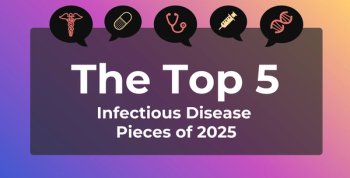
Survivors of Childhood ALL Have Risk of Neurocognitive Issues Even Before Treatment
While increased risk of neurocognitive issues, such as long-term problems with attention, is common in survivors of childhood acute lymphoblastic leukemia (ALL), the risk may actually begin before treatment, according to a study published in JAMA Oncology.
While increased risk of neurocognitive issues, such as long-term problems with attention, is common in survivors of childhood lymphoblastic leukemia (ALL), the risk may actually begin before treatment, according to a study
Researchers analyzed the cerebrospinal fluid (CSF) of 235 children with ALL who were treated at St. Jude Children’s Research Hospital with chemotherapy alone. They examined concentration CSF biomarkers at diagnosis and during therapy to evaluate associations with long-term neurocognitive and neuroimaging outcomes. The group included 138 long-term survivors.
They found that, even before treatment began, the participants had large variations in concentrations of CSF markers, which suggested injury to glial cells, which make up white matter in the brain that help the brain function efficiently.
“This was a surprise. Until now, we had not suspected that leukemia, by itself, or the inflammatory response to the disease, may lead to changes that leave ALL survivors at risk for problems with executive functioning and processing speed later,” corresponding author Kevin Krull, PhD, a member of the St. Jude Department of Epidemiology and Cancer Control,
The researchers analyzed 5 CSF biomarkers—myelin basic protein, nerve growth factor, total and phosphorylated tau protein, glial fibrillary acidic protein, and chitotriosidase—and found that levels of 2 of them—myelin basic protein, the biomarker for myelin degradation, and glial fibrillary acidic protein, a biomarker for astrogliosis—were elevated at baseline. Meanwhile, nerve growth factor, a biomarker for neuronal damage, and chitotriosidase, a biomarker for neuroinflammantion, increased as treatment progressed.
Furthermore, patients who were exposed to methotrexate during treatment had as much as a 70% higher risk of developing leukoencephalopathy during therapy, as well as reduced neurocognitive functioning as long-term survivors. The researchers found that patients with a variant of the COMT gene had higher biomarker levels following methotrexate treatment.
“Taken together, the results suggest that survivors’ neurocognitive deficits are multifactorial and reflect a complex interaction among genetics, treatment intensity, and other factors,” Krull said. “Monitoring CSF biomarkers and screening for genetic mediators of brain injury may help identify and intervene with survivors at risk for neurocognitive problems.”
References
Cheung YT, Khan RB, Liu W, et al. Association of cerebrospinal fluid biomarkers of central nervous system injury with neurocognitive and brain imaging outcomes in children receiving chemotherapy for acute lymphoblastic leukemia. [published online March 29, 2018]. JAMA Oncol. doi:10.1001/jamaoncol.2018.0089.
Newsletter
Stay ahead of policy, cost, and value—subscribe to AJMC for expert insights at the intersection of clinical care and health economics.








































